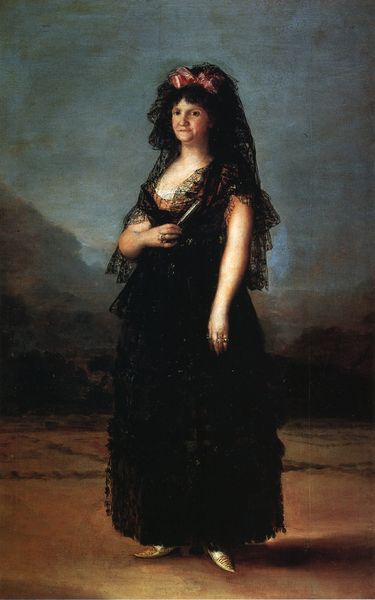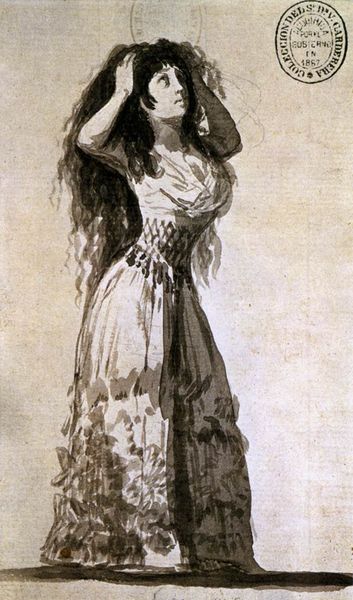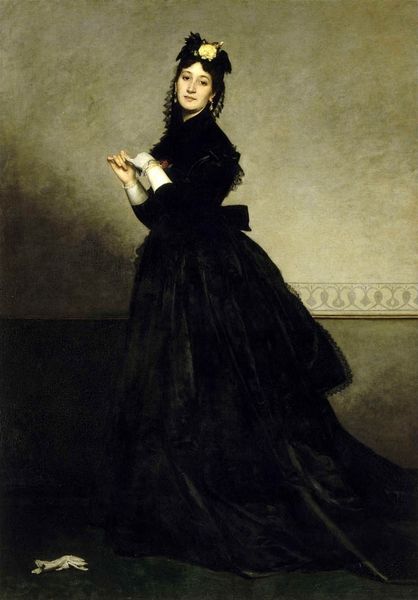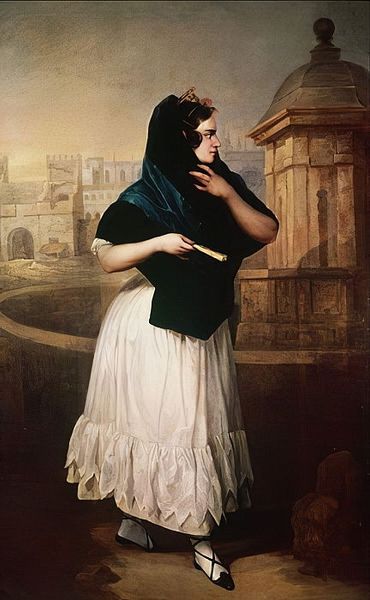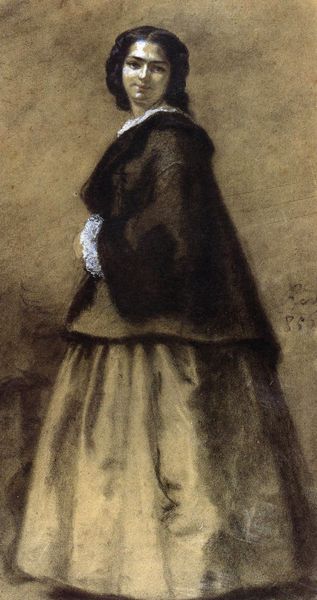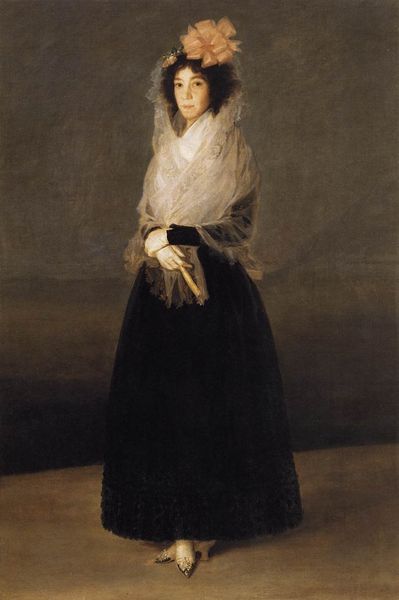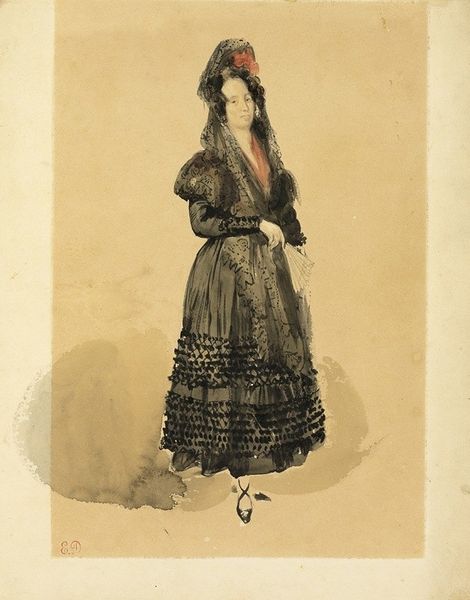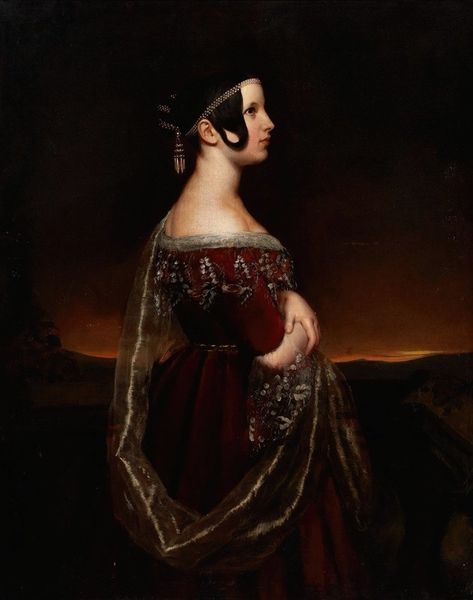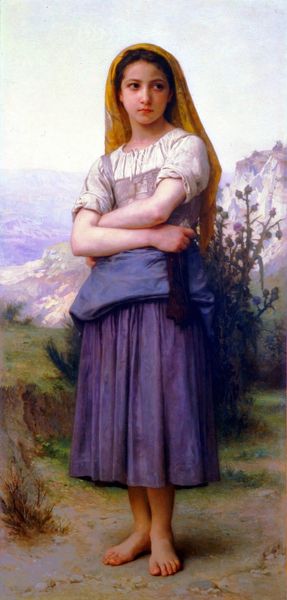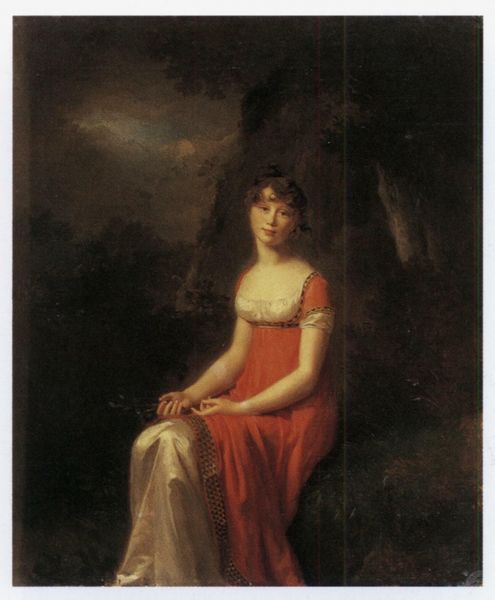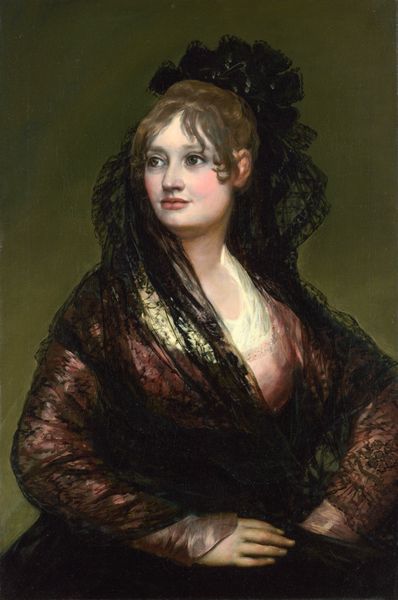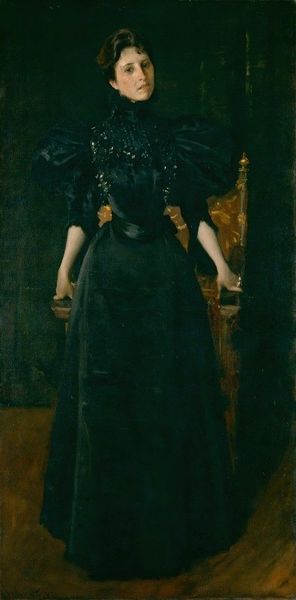
painting, oil-paint
#
portrait
#
neoclacissism
#
painting
#
oil-paint
#
romanticism
#
history-painting
#
realism
Dimensions: 142 x 97 cm
Copyright: Public domain
Editor: This is Francisco de Goya’s “Mariana Waldstein, Ninth Marquesa de Santa Cruz,” painted in 1797. She stands regally, but something about the black lace and rather vacant stare creates a surprisingly melancholy mood. What strikes you most about this piece? Curator: The painting is, on one level, a representation of elite status, the black lace an emblem of wealth. However, Goya consistently infused his portraits with symbolic depth. The Marquessa’s costume – reminiscent of ‘maja’ attire, commonly associated with lower classes – adds layers. This may represent the noble embracing the burgeoning sense of Spanish nationalism. What do you make of the background setting and the people gathered at the back? Editor: It looks a bit like a performance stage? A gathering, or perhaps a festival? Curator: Precisely. Goya utilizes space and light here not merely for decorative effect but for storytelling. These background figures suggest societal roles, implying her involvement in, perhaps, patronizing the performing arts. Her patronage becomes part of her identity. Consider the fan she is holding; it acts like a formal attribute but its meaning can also relate to the mores of the era. The symbolism of courtship or clandestine meetings, even flirtation… Editor: It’s as if she's representing a specific role in society. Is this then how portraiture in that time was intended to function? Curator: Exactly. Portraits are almost never neutral likenesses. They consciously signal belonging and aspirations through symbolic vocabulary. Through clothing, setting and attributes they capture more than an image; they convey a powerful social and cultural narrative. It's like reading a text through visuals. Editor: I never thought about portraits in quite that way before, that portraits embody cultural values just as effectively as written documents. Curator: Indeed! The image itself becomes a carrier of cultural memory.
Comments
No comments
Be the first to comment and join the conversation on the ultimate creative platform.
